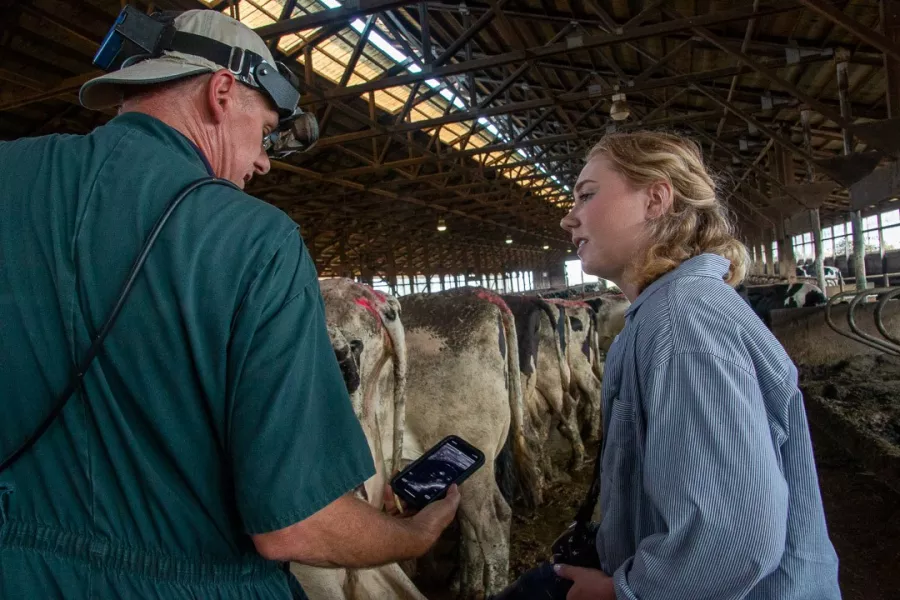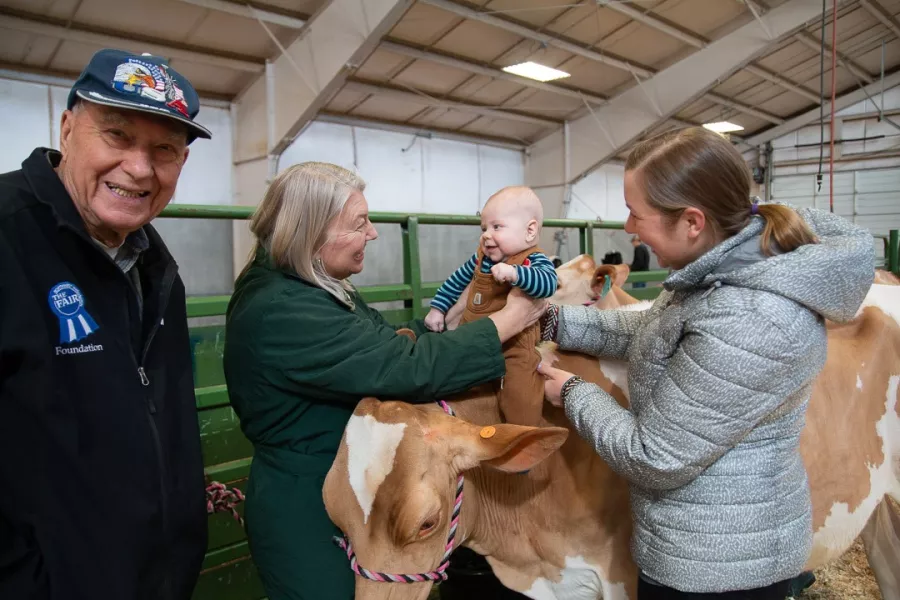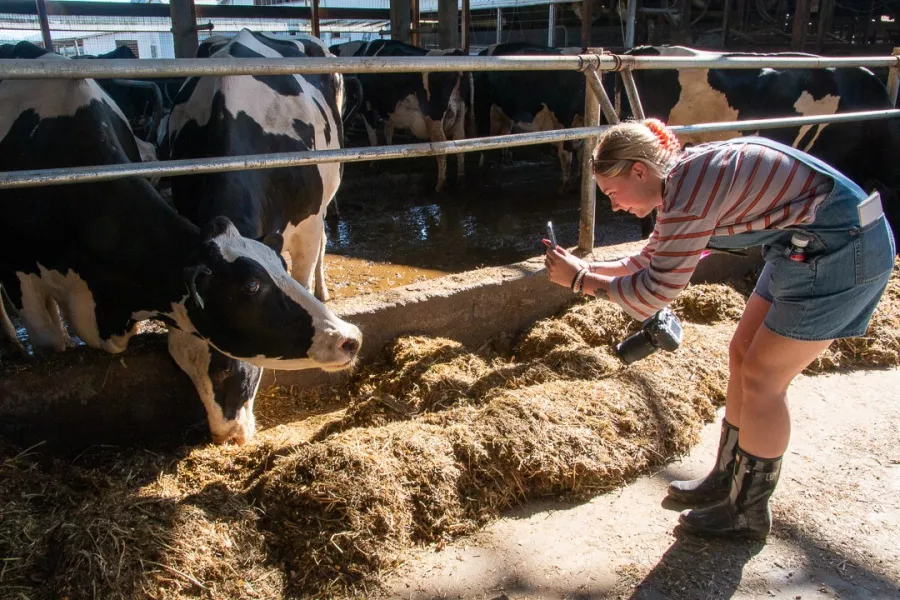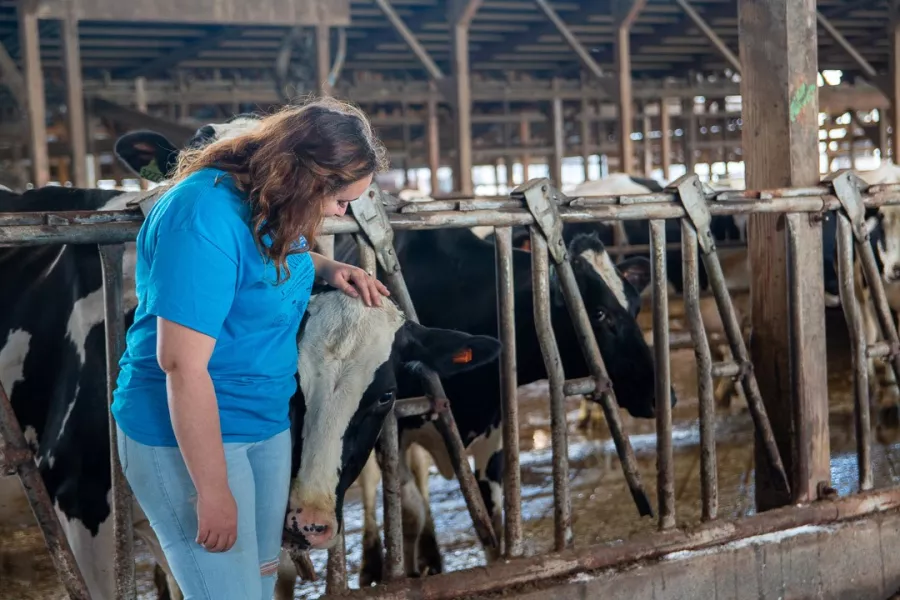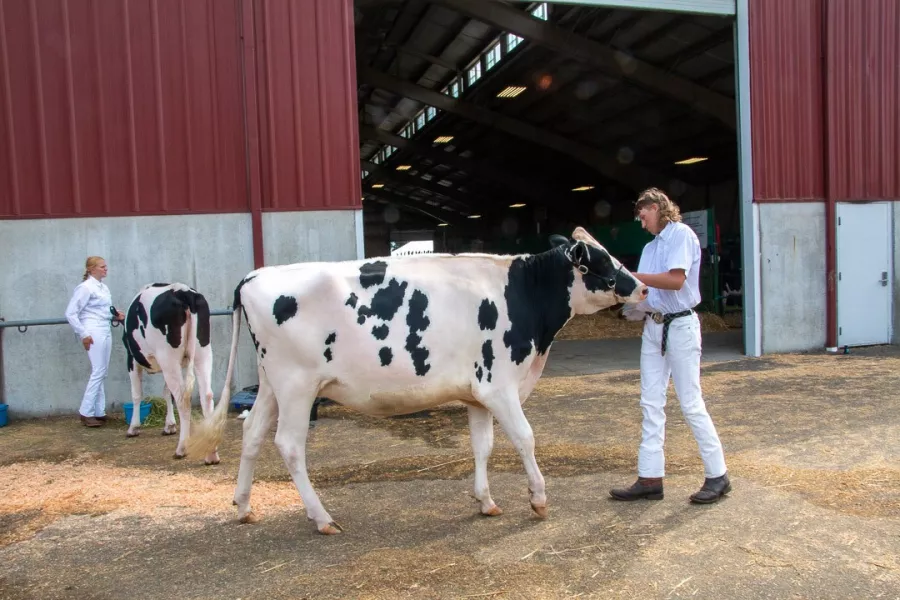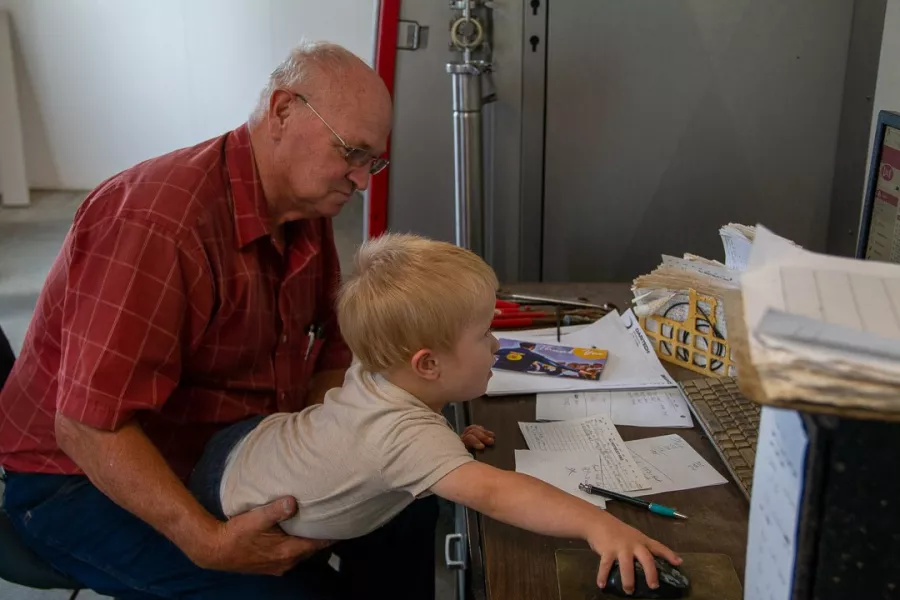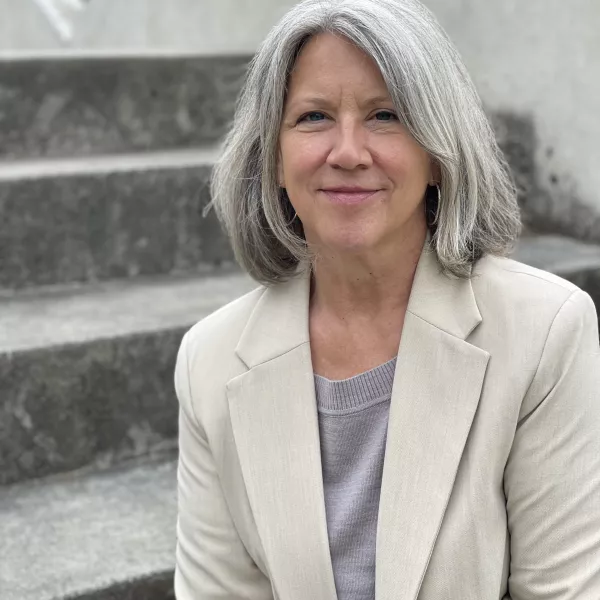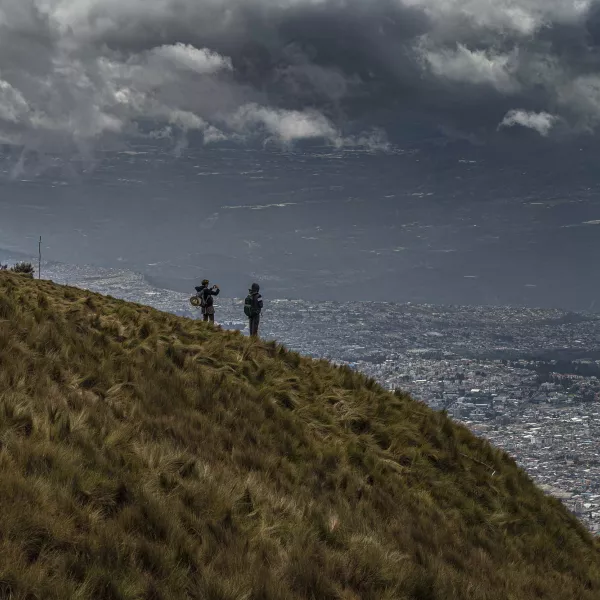Born and raised in Tacoma, I’m a city girl who’s most comfortable sipping lattes in my leather jacket and getting spontaneous tattoos with friends.
Then, last summer after my fourth year as a journalism student at Western, I landed an agriculture-reporting internship started by the Whatcom County Dairy Women with funding from the Dairy Farmers of Washington.
My secret dream of being a cowgirl was about to come true. I was thrilled, but I had no idea what to expect.
Over the next three months, I interviewed everyone from 4-H kids to fourth-generation farmers, shot TikTok videos of scientists, equipment salespeople and semen trucks, and posted social media of ice-cream devotees and lots and lots of cows.
As my editor Sarah Sakurazawa and I pulled up to my first interview at Van Dellen Farms in the northern Whatcom County town of Everson, I was so nervous my hands clammed up.
Herdswoman Brianna DeBruin led us down the barn past hundreds of chomping Holstein cows. I soon learned that eating is what cows do most of the day.
As I petted Stacy, one of DeBruin’s favorite cows, she seemed as curious about me as I was about her. When I felt her udder vein under her warm hair, it was as thick as a garden hose and thumping with blood.
I felt like a kid in a petting zoo again.
Another day I felt that sense of wonder was when I shadowed Dr. Jacob Steiger, a veterinarian of 29 years. I followed Dr. Steiger around Everson conducting pregnancy checkups on cows at Van Berkum Dairy, Van Berkum & Sons Dairy and Heritage Dairy.
As part of the procedure, Steiger palpates the cow’s uterus through her rectum. After I shot several photos of Steiger performing these exams, he offered to let me try.
I put on a pink plastic glove that went all the way up to my shoulder, then Dr. Steiger poured a heavy-duty lubricant over my palm. I inched my hand into the cow. Dr. Steiger guided me from the pelvis to the abdomen, kidneys, iliac arteries and then above the uterus.
I respected this animal so much for trusting me. She was just chewin’ and chillin’ while I had my arm inside of her. It was an incredible thing to interact with the new life this pregnant cow was carrying. I couldn’t stop smiling.
I encountered a new life of a different sort when I met 4-H and FFA animal exhibitors at the Northwest Washington Fair in Lynden.
Barnyard Kids 4-H Club member Lane Oostra is so tall I had to tilt my head 45 degrees to make eye contact.
Oostra, then 17, was a bit reserved and shy during interviews, but his quiet intensity in the livestock ring said more than words ever could.
Synchronizing his steps with Callie, his cow borrowed from Ronelee Farms, Oostra led the 1,200-pound animal with only a thin rope halter into the show arena, where the air was thick with clouds of sawdust and nerves. He stayed laser-focused on the judge until he won a ribbon. Then he grinned so his mom Heather Oostra could snap a picture.
Family connections like those always seem to come first at the fair.
When I met retired dairy farmer Bob Van Weerdhuizen on the fair’s opening day, he was volunteering with his wife, Pauline (or his “bride,” as he calls her), as they have for decades.
He took a great interest in my internship and told me many stories about his life in between answering questions in the Small Animal Experience, a hands-on exhibit that lets kids interact with young farm critters.
He spoke of his life in the Army, how he had met Pauline, his grandparents’ experiences immigrating from the Netherlands and stories about growing up in a dairy farming family.
He told me how he almost lost his grandfather's wedding ring, which his grandmother had given him after his grandfather’s death. The day he lost it in the lawn clippings, he was devastated. With tears in his eyes, he said his son eventually found it. He explained that farmers rarely wear their wedding rings to avoid getting a finger caught in farm machinery or shocked by electricity.
The moments I shared with the Van Weerdhuizens taught me about commitment: to each other, the fair and their family.
As the internship wrapped up, I interviewed Larry Stap, owner of Twin Brook Creamery in Lynden. This was special because I’d grown up drinking Twin Brook Creamery’s chocolate milk. We got to see the immaculate pipelines, the farm dogs and the huge refrigerator where that milk is bottled.
All summer, I’d looked forward to seeing a robotic milker in action. Stap showed me the giant red Lely robotic milker used for his 265 milking Jersey cows. As we made our way out of the barn, Stap’s grandson toddled away from his big sister to investigate some chickens in the garage. Scooping him up, Stap passed off his little chicken chaser to his son-in-law, who was driving by on a tractor.
Lucky little guy. Seeing Stap and his grandson made me miss my own grandpa.
It also helped me realize dairy farming is not just about milking cows. It’s about long days caring for the land by families who have been on that land for generations.
Those families face challenges. The number of Washington dairy farms is down from 640 in 2003 to 310 in 2022, declining nearly 50 percent. But the dairy industry still plays a major role to Washington’s economy, says Dennis Koong, a regional director of the U.S. Department of Agriculture’s National Agricultural Statistics Service. The number of milked cows has remained steady at around 260,000 over two decades. Also, at $1.21 billion in 2021, milk production still ranks second in value only to apples in the state’s agricultural economy, says Koong.
The hospitality of these farmers reminded me of my parents, who are always hosting and cooking for their friends and family. They share the value of feeding people.
I will never see a stick of butter, a whole milk latte at Black Fern Coffee or a milkshake from Boomer’s Drive-In in the same way. I’ll see them as the product of people like DeBruin, Steiger and Stap, waking up at dawn to milk cows or to care for a newborn calf.
The gritty city girl was still in me. She always will be. But now she’s shopping for overalls and XTRATUF boots. After getting a latte and a tattoo first, of course.
